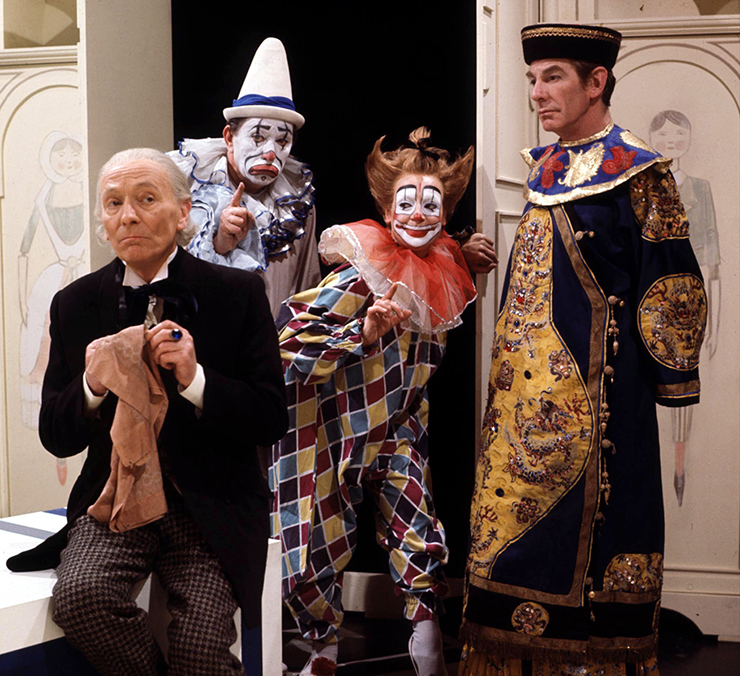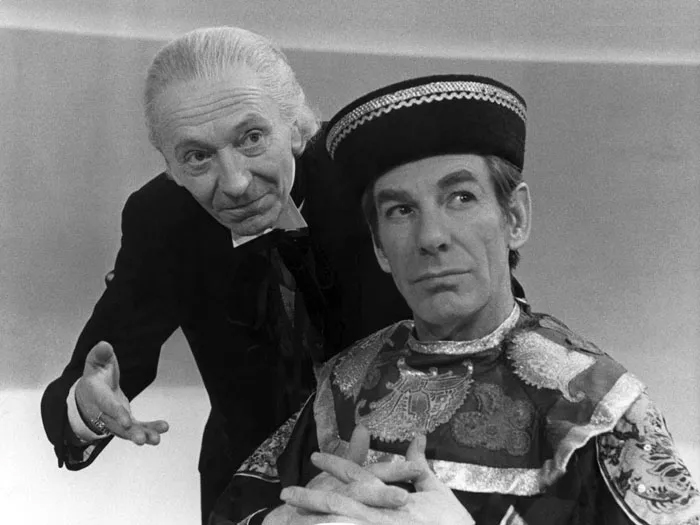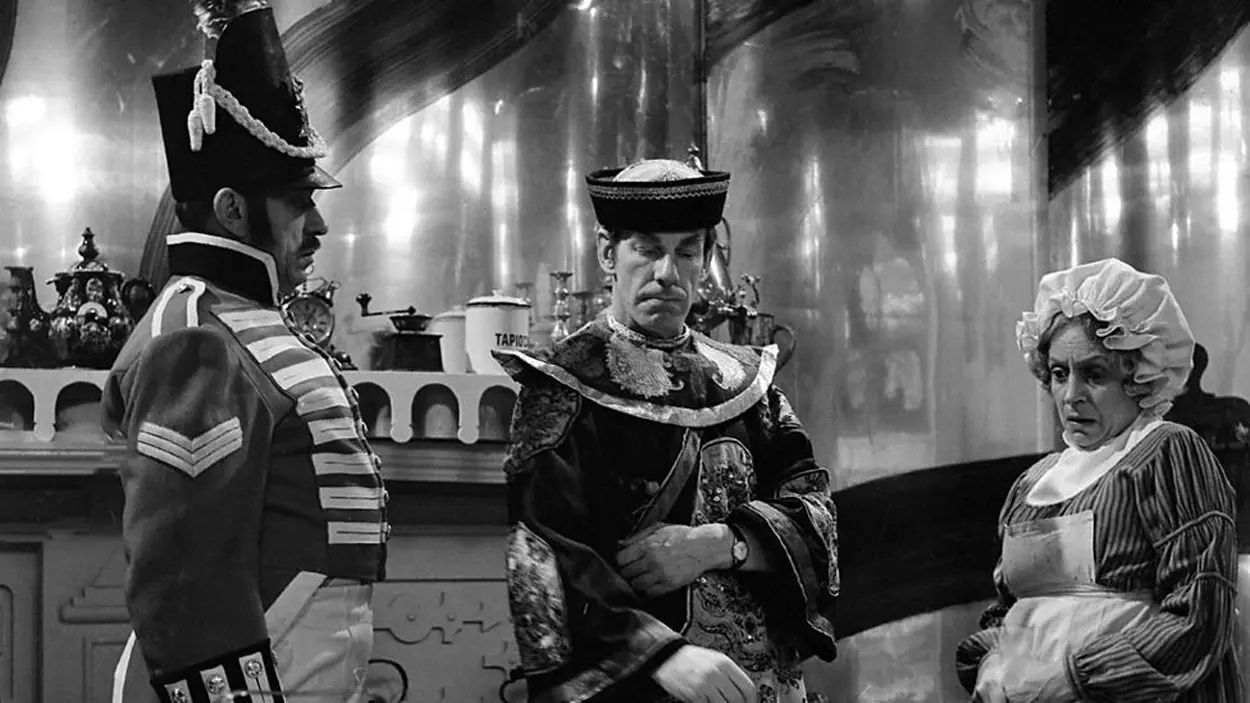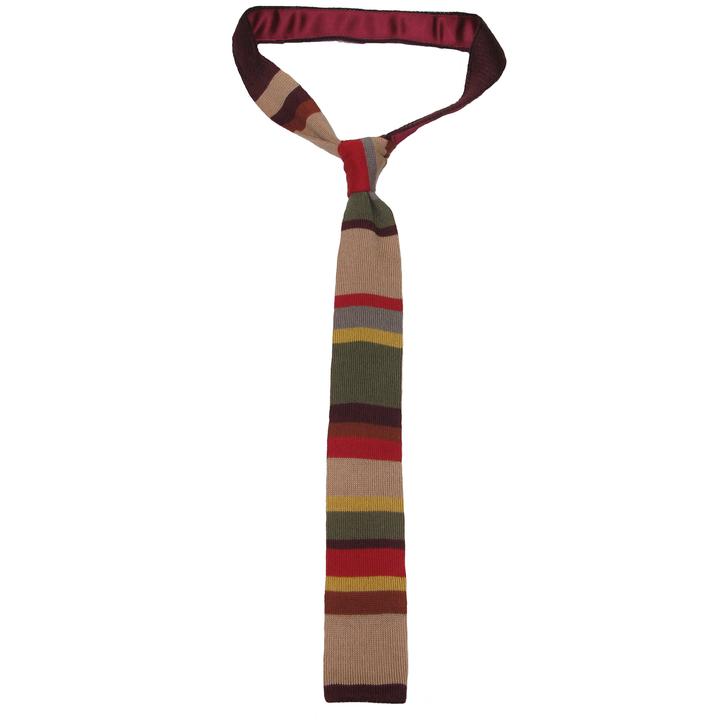Did you know that the mostly-missing story ‘The Celestial Toymaker’ was (almost) the last to feature William Hartnell?

By 1966, Doctor Who had been on the air for three years, and the relentless schedule was beginning to take its toll on the actors. In those days, Doctor Who frequently broadcast seasons in excess of 30 (or even 40) episodes, meaning that the artists were required to rehearse and record fresh episodes on a weekly basis. Even for the younger performers in the ensemble, the strain was considerable.
And by the time it came to produce ‘The Celestial Toymaker,’ the latest Doctor Who season (Season Three) was into its 40th week. Indeed, production had even continued over the 1965 Christmas break, which fell in the middle of the epic adventure ‘The Daleks’ Master Plan.’ The cast were in the midst of a marathon sprint, and they still had 16 weeks to go.
At the same time, the First Doctor William Hartnell was dealing with the symptoms of a long-term health condition – arteriosclerosis. Simply put, this was a thickening of the arteries which often resulted in confusion and difficulty understanding speech, symptoms which would be difficult for any person to live with. But in William Hartnell’s case, having to learn long scripts with lengthy pieces of dialogue on a weekly basis, the challenge was even tougher.

Moreover, production on ‘The Celestial Toymaker’ was made harder due to tensions between William Hartnell and the (then) producer John Wiles, who frequently clashed. And although Innes Lloyd ended up being the producer for ‘The Celestial Toymaker,’ Wiles had commissioned the story prior to his departure. Indeed, ‘The Celestial Toymaker‘ became the first Doctor Who story that Innes Lloyd produced.
Initially, John Wiles’ plan for ‘The Celestial Toymaker’ had been for the Doctor to become invisible for the majority of the story, only to miraculously re-appear at the end with a brand new face – presumably as a result of the Toymaker’s meddling. This would have allowed Wiles to replace William Hartnell without having to cancel Doctor Who.
This idea, however, did not go down well with the BBC’s head of serials Gerald Savory, who vetoed it. John Wiles subsequently resigned in protest, and new producer Innes Lloyd was left to take up the mantle.

But as we all know, there is a certain degree of foreshadowing with this face-swapping idea. Whatever Savory’s reasoning was for the veto, in hindsight we know that the First Doctor was living on borrowed time. In fact, William Hartnell would only star in five more stories before his face would, indeed, be changed with someone else’s at the end of ‘The Tenth Planet.’ So perhaps John Wiles’ idea had sown a seed in the minds of BBC management.
At the same time, there are still traces of Wiles’ proposal in the finished version of ‘The Celestial Toymaker.’ The First Doctor does become invisible at the start of the story, and although he features in it throughout, he is represented only by disembodied hands and pre-recorded voice-overs. So William Hartnell is mostly missing for the majority of the tale, and only re-appears in the latter half of the final episode.
And whilst it may seem strange to have a Doctor Who adventure which doesn’t really involve the Doctor, it had been standard practice since the series began to write some episodes which didn’t feature the regulars. This was to allow the actors some much-needed time off in the midst of a punishing schedule. The middle two episodes of ‘The Keys of Marinus,’ for example, are distinctly Doctor-less; in the serial, the Doctor teleports to a different part of the planet in search of the titular keys, with the focus shifting to his companions Ian, Barbara and Susan in his absence.
But perhaps the most famous example is the 1965 single episode story ‘Mission to the Unknown’ which doesn’t feature any of the series’ regulars at all. It’s a standalone tale (sometimes informally referred to as ‘Dalek Cutaway’) which acts as a precursor to the 12 part ‘Daleks’ Master Plan‘ which would follow five weeks later. Again, this was to afford Doctor Who‘s regulars some crucial holiday time.
And so it’s not that strange that William Hartnell is missing for the majority of ‘The Celestial Toymaker,’ disappointing as it is that he wasn’t able to play a bigger part in the story. And sadly for today’s viewers, ‘The Celestial Toymaker’ is mostly missing from the BBC archive, save for its final instalment and the original soundtracks, plus some publicity photos taken during the production.

Its legacy, however, is far-reaching. As we already discussed, it paved the way for the first ever regeneration at the end of ‘The Tenth Planet’ – a decision which (arguably) has proven essential to Doctor Who‘s longevity. It’s hard to believe that the programme could have survived 60 years without this in-built capacity to re-invent itself.
Equally, the character of the Celestial Toymaker himself continues to be a firm (if obscure) fan favourite. Although he hasn’t appeared on-screen since his 1966 debut, he was name-checked in the 2020 Jodie Whittaker episode ‘Can You Hear Me?’ and has also featured in a number of Doctor Who stories in other media, such as the 1999 novel ‘Divided Loyalties’ and in the Big Finish audio adventure ‘The Nightmare Fair.’
In fact, this latter adventure was almost a TV story, having been originally slated for Doctor Who‘s cancelled 1986 season. It would have seen the Celestial Toymaker do battle with the Sixth Doctor Colin Baker, assisted by an army of Autons.
What do you make of this 1966 story? And do you feel about the original plan to ‘face-swap’ the First Doctor? Let me know in the comments below.









It seems that 58 years later the Toymaker may finally have succeeded in triggering a new Doctor if the 60th specials hype is to be believed!
I think animation could quite well save this story and make it something better since it’s a very visual story. On audio alone it doesn’t work very well at all. The problem is I think it would be a bit of an animators nightmare since it’s probably a big task to animate all of the games. I would also assume that the project producers would want to put their original spin on the story and do a “Macra Terror” styled vision, which, in my opinion, worked! If the January rumours are anything to go by then this may very well be a future project.